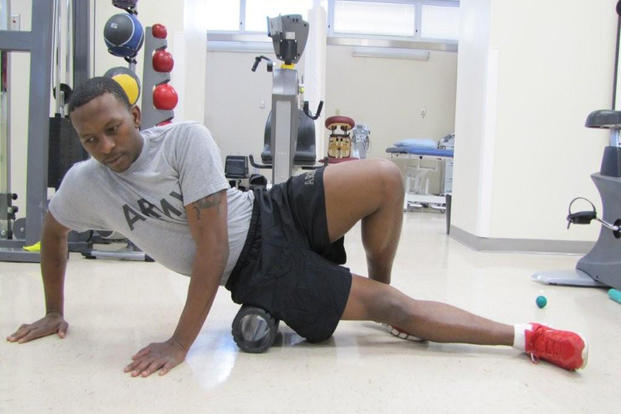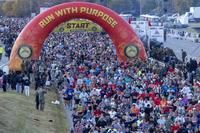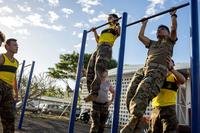If your workouts leave you too sore to be effective at your job the following day, you might want to try out some of these affordable products designed to help recover.
The concept of the following device use is a term called myofascial release (MFR). MyofascialRelease.com defines this process as: “Myofascial release is a safe and very effective hands-on technique that involves applying gentle sustained pressure into the myofascial connective tissue restrictions to eliminate pain and restore motion. This essential “time element” has to do with the viscous flow and the piezoelectric phenomenon: a low load (gentle pressure) applied slowly will allow a viscoelastic medium (fascia) to elongate.”
1. The Foam Roller: No home or gym bag should be without this device. Commonly called the “poor man’s masseuse,” this has been a breakthrough device with typical nagging injuries such as joint tendinitis. For your typical running injuries, this device has been able to relieve pain around joints like iliotibial band syndrome, patella-femoral syndrome, shin splints, hips and the muscles in the legs and feet. See fascia definition and how it helps. There are a few distinctions to be familiar with as well:
- Typical foam: You can get an inexpensive foam roller that is literally a piece of cylindrical foam. The problem is that over time (6-8 weeks) of normal use, this foam gets too soft and deformed. But it works while it lasts. These are really easy to find in the fitness sections of most major shopping stores.
- PVC pipe with padding: For maybe $10-$15 more, you can get this model that never will lose its shape and will last for years.
- Vibrating foam roller: There are many brands that have a battery-charged vibration device inside the foam roller. For a more expensive option, you can get one from Hyper Ice. Good device as the added vibration seems to enhance the feel. There is some science that has issues with vibration and some that do not. It really depends on the vibrating frequency and the location of the device on the body. Do your research and try it out and see whether vibration is something that you prefer.
2. Tennis and lacrosse ball: You may not even have to spend any extra money with this tool. Just learn how to use it; see video. If your goal is to reach a trigger point of pain or a knot on a muscle area, try sitting, lying and using a lax ball to massage a small area. You can use them on your arms, neck, shoulder, torso and legs, but I like to do foot massage with the ball. It is especially useful for fighting off plantar fasciitis, a very painful foot injury on the bottom of the foot that can affect walking and running. See more about plantar fasciitis.
3. Massage stick: Another option is to apply the pressure yourself, using a rolling stick. Or you can have your partner hit a sore area if it is difficult to reach. During your normal cooldown and stretch session, add in the massage stick on a few of the muscles/areas that are giving more trouble. See video.
4. Vibration tools. Now, this is getting out of the realm of myofascial release, but it's still a viable method to aid in recovery. The TheraGun is a pricier product that takes the functions of a jigsaw power tool and added a massage tip to create a penetrating pressure and vibration force. Other power tools are useful and can vibrate at slightly different frequency but are very effective. The orbital car buffer has a vibrating (not spinning) frequency of 60hz and has been gaining popularity in the professional sports world as well as the military.
5. Trigger Point brand: If you are looking for a complete set of foam rollers, smaller foot rollers, balls, pressure-point canes, massage sticks and more, see the options Trigger Point offers.
These are just some of the devices being used in the self-massage market that are making strides within the training world. I would suggest getting a good foam roller (PVC core), a lacrosse and tennis ball, and a car buffer and keep your budget below $50.
Previously, the foam roller was the best thing to make it to the fitness world since the push-up, but now with the expanding uses of myofascial release using balls, and the vibration tools like the Ryobi Orbital Car Buffer, you can make nice strides in recovery with these basic tools.
Stew Smith is a former Navy SEAL and fitness author certified as a Strength and Conditioning Specialist (CSCS) with the National Strength and Conditioning Association. Visit his Fitness eBook store if you’re looking to start a workout program to create a healthy lifestyle. Send your fitness questions to stew@stewsmith.com.
Want to Learn More About Military Life?
Whether you're thinking of joining the military, looking for fitness and basic training tips, or keeping up with military life and benefits, Military.com has you covered. Subscribe to Military.com to have military news, updates and resources delivered directly to your inbox.
















